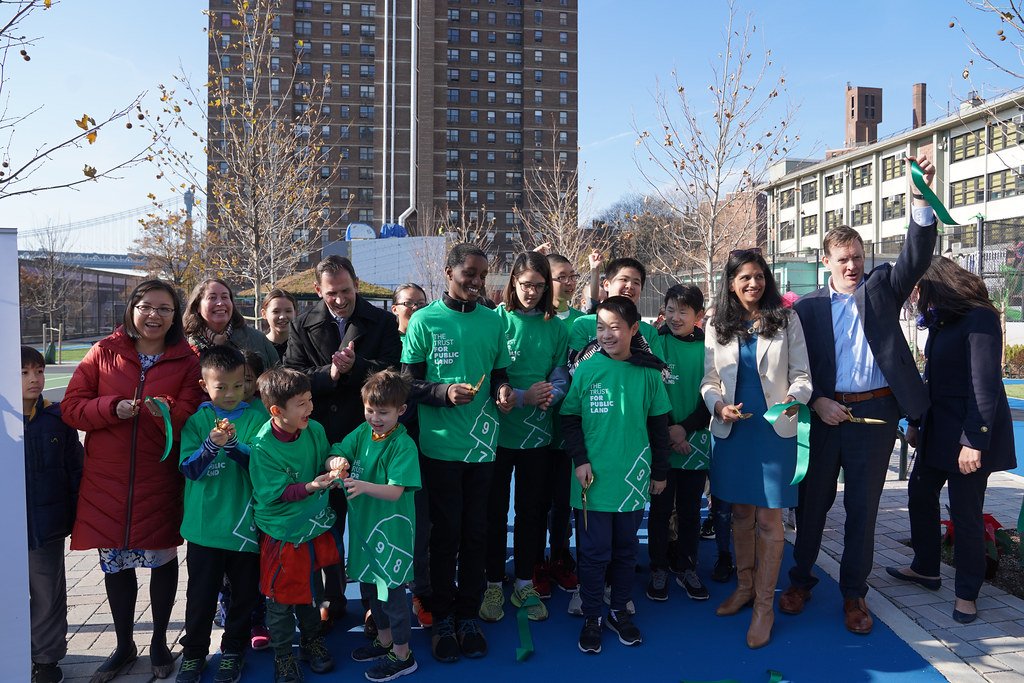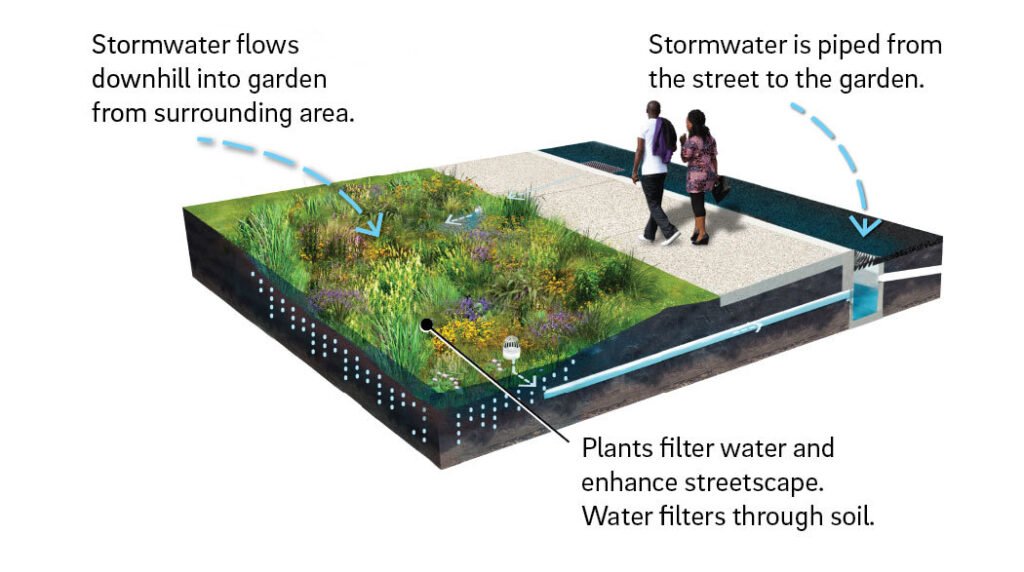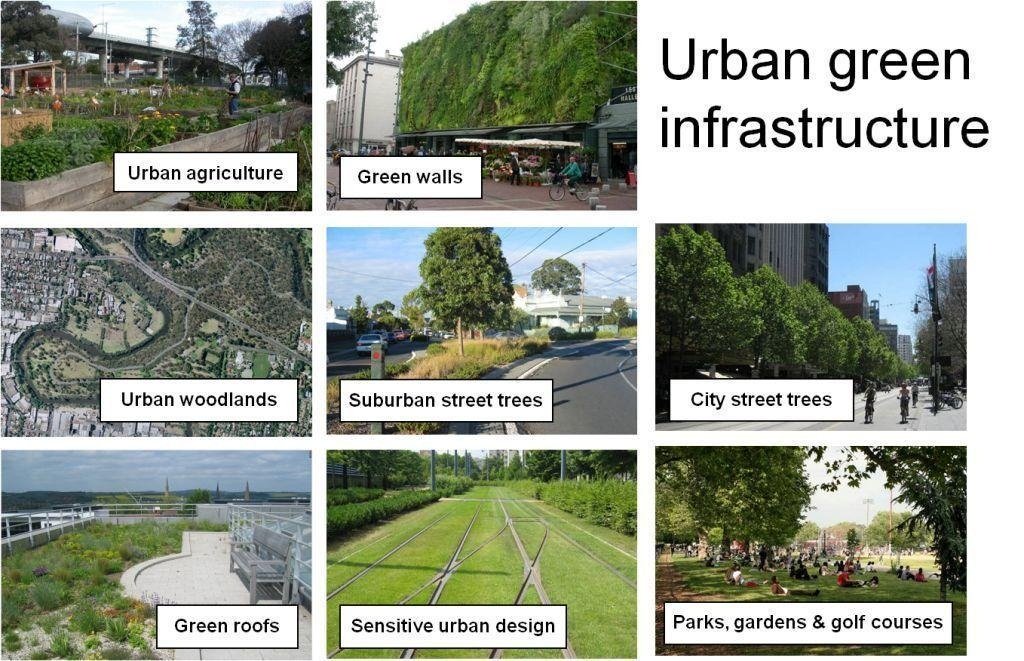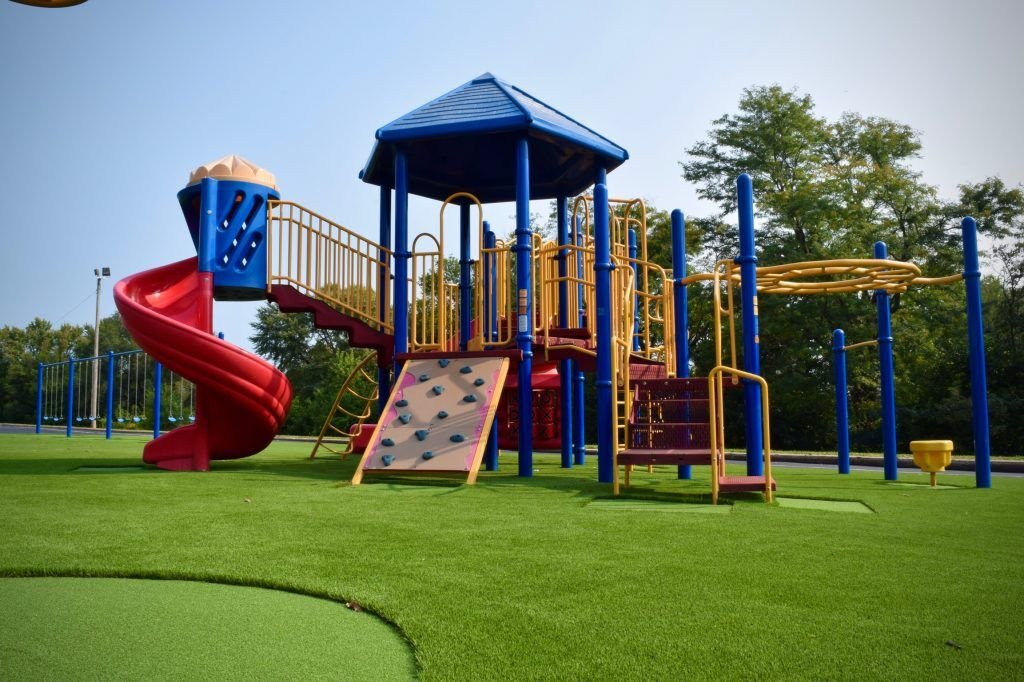Urban planners, architects, and designers all across the world are attempting to make cities spongier by using natural solutions to better absorb water. In congested cities like New York, where open space is limited, policymakers are reconsidering a neighborhood staple: the school playground.

PS 184M Shuang Wen, a primary school in Manhattan’s Chinatown, has a renovated schoolyard with modern play equipment, a yoga circle, a stage, and basketball and tennis courts. According to New York City’s Department of Environmental Protection (DEP), it also boasts a porous grass field that can catch an estimated 1.3 million gallons of stormwater runoff.

The grass field is built on top of infiltration basins, which are reservoirs that can retain significant amounts of rainwater. These basins, paired with a grass-roof gazebo, a student-run rain garden and a slew of new trees, can help New York City better absorb extreme precipitation, which is becoming more frequent and severe with climate change.
Green infrastructure intercepts stormwater before it can reach a catch basin and allows it to be naturally absorbed into the ground. This creates additional capacity in the sewer system and helps to reduce flooding. Cities across the country have begun to uproot asphalt in favor of lush, green schoolyards — or at least porous turf.

In hot weather, concrete and asphalt contribute to urban heat islands, raising average daily temperatures by up to seven degrees. Green spaces in cities have the opposite effect, lowering surrounding temperatures by up to seven degrees. This can mean the difference between life and death during heat waves, which are becoming more severe and common as the earth warms.
Reference- National Geographic, Clean Technica, EPA website, The Guardian,Science Direct, BBC Earth






